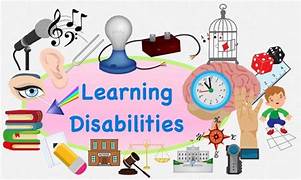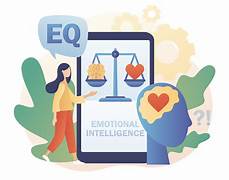How to Spot and Overcome Learning Disabilities
Learning disabilities (LDs) are more common than we might think, affecting approximately 1 in 5 individuals. These challenges can affect a child’s ability to learn, understand, or process information in a typical manner, but they do not reflect a lack of intelligence or effort. Rather, learning disabilities are neurological conditions that impact how a person receives, processes, or expresses information. As a result, students with learning disabilities often face frustration, low self-esteem, and academic struggles, making it crucial for parents, educators, and even peers to spot the signs early and take appropriate steps to provide support.
In this article, we’ll explore the different types of learning disabilities, the signs to look out for, and effective strategies for overcoming these challenges. By understanding these conditions, we can better support students in realising their potential and creating a positive, inclusive educational experience.
1. Understanding Learning Disabilities
Before diving into how to spot and overcome learning disabilities, it’s essential to understand what they are. Learning disabilities are often hidden struggles that affect a person’s ability to perform specific academic tasks. These disabilities are lifelong, but with proper support, individuals can manage and thrive in school and beyond.
Types of Learning Disabilities:
- Dyslexia: This is perhaps the most well-known learning disability. It primarily affects reading, spelling, and writing. Students with dyslexia often have difficulty decoding words, reading fluently, and understanding written text.
- Dyscalculia: This condition affects an individual’s ability to understand numbers and mathematical concepts. It can make tasks like counting, doing arithmetic, or comprehending math-related problems a significant challenge.
- Dysgraphia: Dysgraphia impacts handwriting and fine motor skills. Students with dysgraphia may have poor handwriting, struggle with spelling, and find it challenging to organise their thoughts in written form.
- Auditory Processing Disorder (APD): Individuals with APD have difficulty processing and making sense of sounds, which can interfere with listening, following directions, or understanding spoken language.
- Nonverbal Learning Disabilities (NVLD): NVLD affects visual-spatial skills and motor coordination. It can make it hard for individuals to understand nonverbal cues, such as body language, and often results in difficulties with social interactions and abstract thinking.
Each type of learning disability presents its unique challenges, but they all share the common factor of affecting how a person processes and learns information.
2. Signs and Symptoms of Learning Disabilities
The key to overcoming learning disabilities is early identification. The sooner a student’s struggles are recognised, the quicker steps can be taken to provide support. Here are some common signs and symptoms to look out for at different stages of a child’s development.
Signs in Young Children:
- Difficulty learning the alphabet or recognising letters and numbers.
- Struggling to follow simple directions or understand rhyming patterns.
- Difficulty with fine motor skills, such as holding a pencil or tying shoes.
- Trouble with speech development and pronunciation.
Signs in School-Age Children:
- Reading and spelling difficulties, even after extensive practice.
- Problems with basic arithmetic or understanding mathematical concepts.
- Disorganisation in both personal belongings and schoolwork.
- Struggling to stay focused during lessons or completing assignments.
- Difficulty with handwriting, causing fatigue or frustration during writing tasks.
Signs in Adolescents and Adults:
- Difficulty with reading comprehension or taking notes.
- Poor time management or planning skills.
- Inconsistent performance in various subjects or tasks.
- Trouble interpreting body language or understanding abstract concepts.
- Struggles with multitasking and maintaining focus on complex tasks.
If you notice any of these signs, especially when they persist over time, it may be time to seek professional evaluation.
3. Getting a Diagnosis and Professional Help
A formal diagnosis from a qualified professional, such as a psychologist, learning specialist, or educational psychologist, is critical in identifying a learning disability. It’s important to remember that learning disabilities are not a reflection of intelligence, but rather how the brain processes information. A comprehensive assessment typically includes:
- Standardised tests to measure academic skills, cognitive abilities, and language processing.
- Observations and questionnaires from teachers, parents, or caregivers.
- Interviews to gather insights into the individual’s challenges, strengths, and learning style.
Once diagnosed, educators, specialists, and parents can work together to develop an Individualized Education Plan (IEP) or a 504 Plan, which outlines the support and accommodations necessary to help the student succeed.
4. Early Intervention: The Key to Success
As with many other developmental challenges, early intervention is vital when addressing learning disabilities. The earlier support is provided, the more successful students will be in managing their challenges. Intervention strategies might include:
- Targeted tutoring or academic support that focuses on specific skills such as reading, writing, or math.
- Speech therapy or language services to help with communication or auditory processing difficulties.
- Occupational therapy to improve motor skills, handwriting, or sensory integration.
- Cognitive behavioural therapy (CBT) to help with the emotional and psychological aspects of learning difficulties, such as building self-esteem and managing frustration.
By implementing early interventions, students are more likely to develop coping mechanisms and strategies that enable them to succeed both academically and socially.
5. Creating an Inclusive Classroom Environment
For students with learning disabilities, a supportive and inclusive classroom environment is crucial. Teachers can play an instrumental role in making learning accessible and comfortable for all students, regardless of their individual challenges.
Strategies for Teachers:
- Differentiated instruction: Tailor teaching methods to meet the diverse needs of students, offering various ways to engage with the material (e.g., visual aids, hands-on activities, and audio resources).
- Use of assistive technology: Tools such as text-to-speech software, graphic organisers, and speech recognition apps can help students overcome specific learning challenges.
- Provide extra time on assignments and tests: Allowing extended time helps alleviate pressure and gives students the opportunity to process information more effectively.
- Break tasks into smaller, manageable steps: Breaking down complex tasks into bite-sized pieces makes them less overwhelming and easier to tackle.
- Use positive reinforcement: Celebrate successes and progress, no matter how small, to help build self-confidence and motivation.
An inclusive classroom can make a world of difference in helping students with learning disabilities succeed.
6. Supporting Students at Home
Parents play a key role in supporting their children with learning disabilities. Home is where students can practise skills, develop routines, and receive emotional support. Here are ways parents can assist:
Home Strategies:
- Establish a structured routine: Consistent schedules help children with learning disabilities stay organised and reduce anxiety.
- Provide a quiet, distraction-free workspace: This will help children focus on their schoolwork.
- Use positive reinforcement: Encourage effort and improvement rather than focusing solely on outcomes. Praise persistence, even in the face of difficulty.
- Collaborate with teachers: Regular communication between home and school ensures that both parties are working together to support the child’s needs.
- Focus on strengths: Help your child discover their strengths and interests to build self-esteem and confidence.
7. Building Self-Esteem and Emotional Support
Learning disabilities can take an emotional toll on students, leading to feelings of inadequacy, frustration, or anxiety. Building a strong sense of self-worth and providing emotional support is critical to overcoming learning challenges.
Ways to Support Emotional Well-being:
- Encourage self-advocacy: Teach students to understand their learning disability and advocate for the support they need.
- Foster resilience: Encourage students to persevere despite setbacks and to view challenges as opportunities to grow.
- Promote a growth mindset: Reinforce the idea that intelligence can be developed through effort and practice.
- Provide emotional outlets: Offer opportunities for students to express their emotions in a safe and supportive environment, such as through journaling or talking with a trusted adult.
By providing emotional support, students can maintain a positive outlook and stay motivated throughout their academic journey.
8. Overcoming Learning Disabilities: Strategies for Success
While learning disabilities may present challenges, they do not define a person’s potential. With the right support, students can achieve success in both their academic and personal lives. Here are some key strategies for overcoming learning disabilities:
Effective Strategies:
- Practice patience and persistence: Learning disabilities often require extra time and effort. Be patient and persistent in developing strategies that work.
- Focus on strengths: Encourage students to develop their talents and skills outside of traditional academic areas.
- Set realistic goals: Break down long-term goals into smaller, achievable steps that can help build confidence.
- Promote self-awareness: Help students understand their strengths and weaknesses, and teach them how to advocate for themselves when necessary.
- Utilise support systems: Engage with tutors, mentors, or therapy services to provide additional guidance and encouragement.
With the right strategies in place, students with learning disabilities can reach their full potential and thrive academically.
Conclusion
Learning disabilities are not insurmountable obstacles; they are challenges that, when recognised early and addressed effectively, can be overcome. By understanding the types of learning disabilities, recognising the signs, and implementing appropriate strategies, we can support students in developing the skills they need to succeed. Creating an inclusive environment, both at school and at home, and offering emotional and academic support can empower students to realise their potential and overcome obstacles. Together, we can ensure that every child, regardless of their learning challenges, has the opportunity to shine.
FAQs
1. What is the difference between learning disabilities and intellectual disabilities?
Learning disabilities affect how people process and understand information, while intellectual disabilities involve limitations in intellectual functioning and adaptive skills. A person with a learning disability may have average or above-average intelligence.
2. How can I help my child if I suspect they have a learning disability?
Seek a professional evaluation from a psychologist or educational specialist to confirm the presence of a learning disability and create an action plan for support.
3. Are learning disabilities hereditary?
Yes, learning disabilities can run in families, as genetic factors can influence the development of these conditions.
4. Can a child with a learning disability succeed academically?
Absolutely! With the right support, accommodations, and a focus on their strengths, students with learning disabilities can thrive academically.
5. How do teachers support students with learning disabilities?
Teachers can use differentiated instruction, provide additional time on tasks, and implement assistive technology to support students with learning disabilities.
6. Can learning disabilities be overcome?
While learning disabilities are lifelong, they can be managed with the right strategies, interventions, and support systems, allowing students to succeed in school and beyond.
7. How can parents help their child develop self-advocacy skills?
Encourage your child to understand their learning disability, communicate their needs, and seek out support when necessary. Self-advocacy is key to building confidence and independence.
Learning disabilities (LDs) are more common than we might think, affecting approximately 1 in 5 individuals. These challenges can affect a child’s ability to learn, understand, or process information in a typical manner, but they do not reflect a lack of intelligence or effort. Rather, learning disabilities are neurological conditions that impact how a person receives, processes, or expresses information. As a result, students with learning disabilities often face frustration, low self-esteem, and academic struggles, making it crucial for parents, educators, and even peers to spot the signs early and take appropriate steps to provide support.
In this article, we’ll explore the different types of learning disabilities, the signs to look out for, and effective strategies for overcoming these challenges. By understanding these conditions, we can better support students in realising their potential and creating a positive, inclusive educational experience.
1. Understanding Learning Disabilities
Before diving into how to spot and overcome learning disabilities, it’s essential to understand what they are. Learning disabilities are often hidden struggles that affect a person’s ability to perform specific academic tasks. These disabilities are lifelong, but with proper support, individuals can manage and thrive in school and beyond.
Types of Learning Disabilities:
- Dyslexia: This is perhaps the most well-known learning disability. It primarily affects reading, spelling, and writing. Students with dyslexia often have difficulty decoding words, reading fluently, and understanding written text.
- Dyscalculia: This condition affects an individual’s ability to understand numbers and mathematical concepts. It can make tasks like counting, doing arithmetic, or comprehending math-related problems a significant challenge.
- Dysgraphia: Dysgraphia impacts handwriting and fine motor skills. Students with dysgraphia may have poor handwriting, struggle with spelling, and find it challenging to organise their thoughts in written form.
- Auditory Processing Disorder (APD): Individuals with APD have difficulty processing and making sense of sounds, which can interfere with listening, following directions, or understanding spoken language.
- Nonverbal Learning Disabilities (NVLD): NVLD affects visual-spatial skills and motor coordination. It can make it hard for individuals to understand nonverbal cues, such as body language, and often results in difficulties with social interactions and abstract thinking.
Each type of learning disability presents its unique challenges, but they all share the common factor of affecting how a person processes and learns information.
2. Signs and Symptoms of Learning Disabilities
The key to overcoming learning disabilities is early identification. The sooner a student’s struggles are recognised, the quicker steps can be taken to provide support. Here are some common signs and symptoms to look out for at different stages of a child’s development.
Signs in Young Children:
- Difficulty learning the alphabet or recognising letters and numbers.
- Struggling to follow simple directions or understand rhyming patterns.
- Difficulty with fine motor skills, such as holding a pencil or tying shoes.
- Trouble with speech development and pronunciation.
Signs in School-Age Children:
- Reading and spelling difficulties, even after extensive practice.
- Problems with basic arithmetic or understanding mathematical concepts.
- Disorganisation in both personal belongings and schoolwork.
- Struggling to stay focused during lessons or completing assignments.
- Difficulty with handwriting, causing fatigue or frustration during writing tasks.
Signs in Adolescents and Adults:
- Difficulty with reading comprehension or taking notes.
- Poor time management or planning skills.
- Inconsistent performance in various subjects or tasks.
- Trouble interpreting body language or understanding abstract concepts.
- Struggles with multitasking and maintaining focus on complex tasks.
If you notice any of these signs, especially when they persist over time, it may be time to seek professional evaluation.
3. Getting a Diagnosis and Professional Help
A formal diagnosis from a qualified professional, such as a psychologist, learning specialist, or educational psychologist, is critical in identifying a learning disability. It’s important to remember that learning disabilities are not a reflection of intelligence, but rather how the brain processes information. A comprehensive assessment typically includes:
- Standardised tests to measure academic skills, cognitive abilities, and language processing.
- Observations and questionnaires from teachers, parents, or caregivers.
- Interviews to gather insights into the individual’s challenges, strengths, and learning style.
Once diagnosed, educators, specialists, and parents can work together to develop an Individualized Education Plan (IEP) or a 504 Plan, which outlines the support and accommodations necessary to help the student succeed.
4. Early Intervention: The Key to Success
As with many other developmental challenges, early intervention is vital when addressing learning disabilities. The earlier support is provided, the more successful students will be in managing their challenges. Intervention strategies might include:
- Targeted tutoring or academic support that focuses on specific skills such as reading, writing, or math.
- Speech therapy or language services to help with communication or auditory processing difficulties.
- Occupational therapy to improve motor skills, handwriting, or sensory integration.
- Cognitive behavioural therapy (CBT) to help with the emotional and psychological aspects of learning difficulties, such as building self-esteem and managing frustration.
By implementing early interventions, students are more likely to develop coping mechanisms and strategies that enable them to succeed both academically and socially.
5. Creating an Inclusive Classroom Environment
For students with learning disabilities, a supportive and inclusive classroom environment is crucial. Teachers can play an instrumental role in making learning accessible and comfortable for all students, regardless of their individual challenges.
Strategies for Teachers:
- Differentiated instruction: Tailor teaching methods to meet the diverse needs of students, offering various ways to engage with the material (e.g., visual aids, hands-on activities, and audio resources).
- Use of assistive technology: Tools such as text-to-speech software, graphic organisers, and speech recognition apps can help students overcome specific learning challenges.
- Provide extra time on assignments and tests: Allowing extended time helps alleviate pressure and gives students the opportunity to process information more effectively.
- Break tasks into smaller, manageable steps: Breaking down complex tasks into bite-sized pieces makes them less overwhelming and easier to tackle.
- Use positive reinforcement: Celebrate successes and progress, no matter how small, to help build self-confidence and motivation.
An inclusive classroom can make a world of difference in helping students with learning disabilities succeed.
6. Supporting Students at Home
Parents play a key role in supporting their children with learning disabilities. Home is where students can practise skills, develop routines, and receive emotional support. Here are ways parents can assist:
Home Strategies:
- Establish a structured routine: Consistent schedules help children with learning disabilities stay organised and reduce anxiety.
- Provide a quiet, distraction-free workspace: This will help children focus on their schoolwork.
- Use positive reinforcement: Encourage effort and improvement rather than focusing solely on outcomes. Praise persistence, even in the face of difficulty.
- Collaborate with teachers: Regular communication between home and school ensures that both parties are working together to support the child’s needs.
- Focus on strengths: Help your child discover their strengths and interests to build self-esteem and confidence.
7. Building Self-Esteem and Emotional Support
Learning disabilities can take an emotional toll on students, leading to feelings of inadequacy, frustration, or anxiety. Building a strong sense of self-worth and providing emotional support is critical to overcoming learning challenges.
Ways to Support Emotional Well-being:
- Encourage self-advocacy: Teach students to understand their learning disability and advocate for the support they need.
- Foster resilience: Encourage students to persevere despite setbacks and to view challenges as opportunities to grow.
- Promote a growth mindset: Reinforce the idea that intelligence can be developed through effort and practice.
- Provide emotional outlets: Offer opportunities for students to express their emotions in a safe and supportive environment, such as through journaling or talking with a trusted adult.
By providing emotional support, students can maintain a positive outlook and stay motivated throughout their academic journey.
8. Overcoming Learning Disabilities: Strategies for Success
While learning disabilities may present challenges, they do not define a person’s potential. With the right support, students can achieve success in both their academic and personal lives. Here are some key strategies for overcoming learning disabilities:
Effective Strategies:
- Practice patience and persistence: Learning disabilities often require extra time and effort. Be patient and persistent in developing strategies that work.
- Focus on strengths: Encourage students to develop their talents and skills outside of traditional academic areas.
- Set realistic goals: Break down long-term goals into smaller, achievable steps that can help build confidence.
- Promote self-awareness: Help students understand their strengths and weaknesses, and teach them how to advocate for themselves when necessary.
- Utilise support systems: Engage with tutors, mentors, or therapy services to provide additional guidance and encouragement.
With the right strategies in place, students with learning disabilities can reach their full potential and thrive academically.
Conclusion
Learning disabilities are not insurmountable obstacles; they are challenges that, when recognised early and addressed effectively, can be overcome. By understanding the types of learning disabilities, recognising the signs, and implementing appropriate strategies, we can support students in developing the skills they need to succeed. Creating an inclusive environment, both at school and at home, and offering emotional and academic support can empower students to realise their potential and overcome obstacles. Together, we can ensure that every child, regardless of their learning challenges, has the opportunity to shine.
FAQs
1. What is the difference between learning disabilities and intellectual disabilities?
Learning disabilities affect how people process and understand information, while intellectual disabilities involve limitations in intellectual functioning and adaptive skills. A person with a learning disability may have average or above-average intelligence.
2. How can I help my child if I suspect they have a learning disability?
Seek a professional evaluation from a psychologist or educational specialist to confirm the presence of a learning disability and create an action plan for support.
3. Are learning disabilities hereditary?
Yes, learning disabilities can run in families, as genetic factors can influence the development of these conditions.
4. Can a child with a learning disability succeed academically?
Absolutely! With the right support, accommodations, and a focus on their strengths, students with learning disabilities can thrive academically.
5. How do teachers support students with learning disabilities?
Teachers can use differentiated instruction, provide additional time on tasks, and implement assistive technology to support students with learning disabilities.
6. Can learning disabilities be overcome?
While learning disabilities are lifelong, they can be managed with the right strategies, interventions, and support systems, allowing students to succeed in school and beyond.
7. How can parents help their child develop self-advocacy skills?
Encourage your child to understand their learning disability, communicate their needs, and seek out support when necessary. Self-advocacy is key to building confidence and independence.






